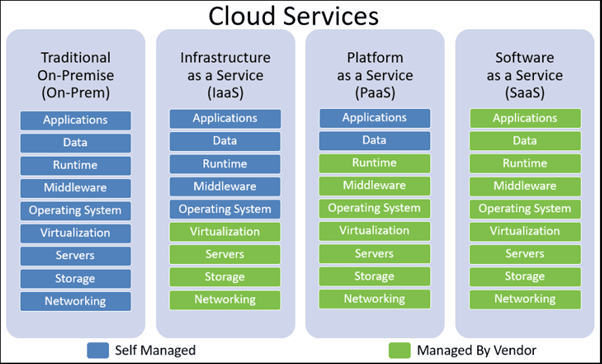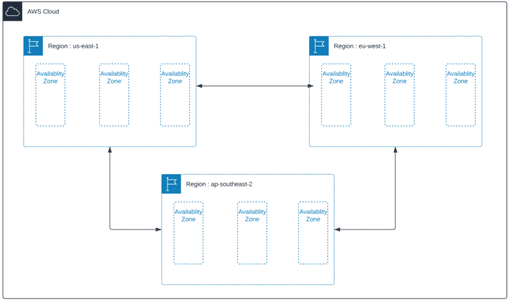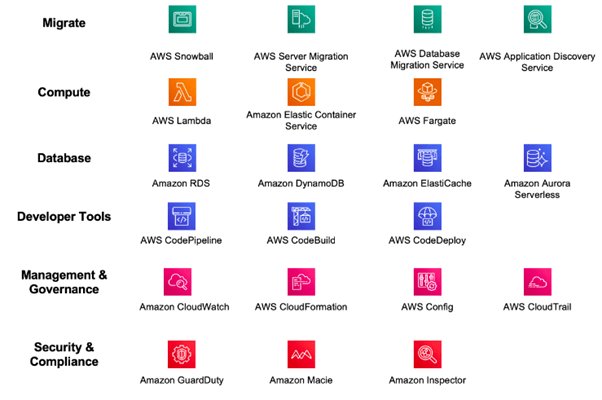"Cloud Computing" is the need-based provision of IT resources via the Internet at usage-based prices. Instead of purchasing, owning, and maintaining physical data centres and servers, you can access technology services such as compute, storage, and databases on-demand through a cloud provider like Amazon Web Services (AWS).
Key advantages
Ø Agility
Ø Elasticity
Ø Cost savings
Ø Go-global in minutes (Worldwide deployments in mins)
Ø Metered billings (Pay-as-you-go)
Types of Cloud computing:
Ø Infrastructure as a Service (IaaS)
Ø Platform as a Service (PaaS)
Ø Software as a Service (SaaS)
It’s very good feel that if you are going to learn leading cloud provider AWS. They are the leader in Cloud computing because of:
Ø Largest community of customers and partners
Ø Greatest functionality
Ø Highest level of security
Ø Shortest innovation cycles
Ø Proven operational expertise
Global Infrastructure AWS
The AWS Global Cloud Infrastructure is the most secure, extensive, and reliable cloud platform, offering over 200 fully featured services from data centers globally. Whether you need to deploy your application workloads across the globe in a single click, or you want to build and deploy specific applications closer to your end-users with single-digit millisecond latency, AWS provides you the cloud infrastructure where and when you need it.
Regions
AWS has the concept of a Region, which is a physical location around the world where we cluster data centers. We call each group of logical data centers an Availability Zone. Each AWS Region consists of multiple, isolated, and physically separate AZs within a geographic area. Unlike other cloud providers, who often define a region as a single data center, the multiple AZ design of every AWS Region offers advantages for customers. Each AZ has independent power, cooling, and physical security and is connected via redundant, ultra-low-latency networks. AWS customers focused on high availability can design their applications to run in multiple AZs to achieve even greater fault-tolerance. AWS infrastructure Regions meet the highest levels of security, compliance, and data protection.
AWS provides a more extensive global footprint than any other cloud provider, and to support its global footprint and ensure customers are served across the world, AWS opens new Regions rapidly. AWS maintains multiple geographic Regions, including Regions in North America, South America, Europe, China, Asia Pacific, South Africa, and the Middle East.
Availability Zones
An Availability Zone (AZ) is one or more discrete data centers with redundant power, networking, and connectivity in an AWS Region. AZs give customers the ability to operate production applications and databases that are more highly available, fault tolerant, and scalable than would be possible from a single data center. All AZs in an AWS Region are interconnected with high-bandwidth, low-latency networking, over fully redundant, dedicated metro fiber providing high-throughput, low-latency networking between AZs. All traffic between AZs is encrypted. The network performance is sufficient to accomplish synchronous replication between AZs. AZs make partitioning applications for high availability easy. If an application is partitioned across AZs, companies are better isolated and protected from issues such as power outages, lightning strikes, tornadoes, earthquakes, and more. AZs are physically separated by a meaningful distance, many kilometers, from any other AZ, although all are within 100 km (60 miles) of each other.
AWS has the most extensive global cloud infrastructure. No other cloud provider offers so many regions and Availability Zones, all characterized by low latency, high throughput and a highly redundant network. AWS is available in 84 Availability Zones within 27 geographic regions worldwide. In addition, 24 additional Availability Zones and 7 additional AWS regions in Australia, Canada, India, Israel, New Zealand, Spain and the Switzerland are planned. The AWS Regions and Availability Zones model is recommended by Gartner as a best practice for running enterprise applications that require high availability.
Key benefits of using AWS:
Ø Security
Ø Availability
Ø Performance
Ø Global footprint
Ø Scalability
Ø Flexibility
Ø Cost savings
Ø Improved Disaster recovery
Ø Flexibility in Subscription options
Some of the key services of AWS:
Documentation link for all the AWS services:
https://docs.aws.amazon.com/index.html?nc2=h_ql_doc_do
Hope this given some basic understanding of Cloud computing and AWS.
Now you are ready to go and create your own AWS account and watch out upcoming posts for gaining more knowledge in AWS.
Happy learning and connect with me for more knowledge transfer.









Top comments (0)